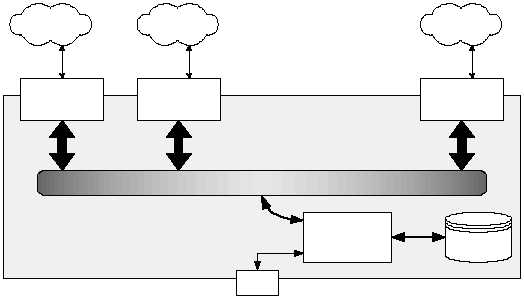
index_23
UNCLASSIFIED
Background and Review
Version 1.0g
UNCLASSIFIED
23
Figure 2-4: A Notional Router’s Hardware
Interfaces provide the physical connections from a router to networks. Interface types
include Ethernet, fast Ethernet, token ring, FDDI, low-speed serial, fast serial, HSSI,
ISDN BRI, etc. Each interface is named and numbered. Interface cards fit into slots
in a router, and an external cable of the appropriate type is connected to the card. In
addition to a number of interfaces, almost all routers have a console port providing an
asynchronous serial connection (RS-232). Also, most routers have an auxiliary port,
which is frequently used for connecting a modem for router management. These
hardware ports should not be confused with the concept of software ports, such as the
“well known” port associated with a protocol or service, e.g. port 23 is Telnet.
2.4.3. Description of Typical Router Software
Similar to any other computer, a router will run control program or operating system
(OS). Each router vendor supplies their own router OS. In the case of Cisco routers,
they run Cisco’s Internetwork Operating System (IOS). It is the IOS that interprets
the Access Control List (ACL) and other commands to the router.
The startup or backup configuration is stored in NVRAM. It is executed when the
router boots. As part of the boot process a copy of this configuration is loaded into
RAM. Changes made to a running configuration are usually made only in RAM and
generally take effect immediately. If changes to a configuration are written to the
startup configuration, then they will also take effect on reboot. Changes made only to
the running configuration will be lost upon reboot.
Router
Interface 0
Interface 1
Interface n
Routing Fabric
CPU
Configuration
Console
Network 0
Network 1
Network n
. . .
. . .


